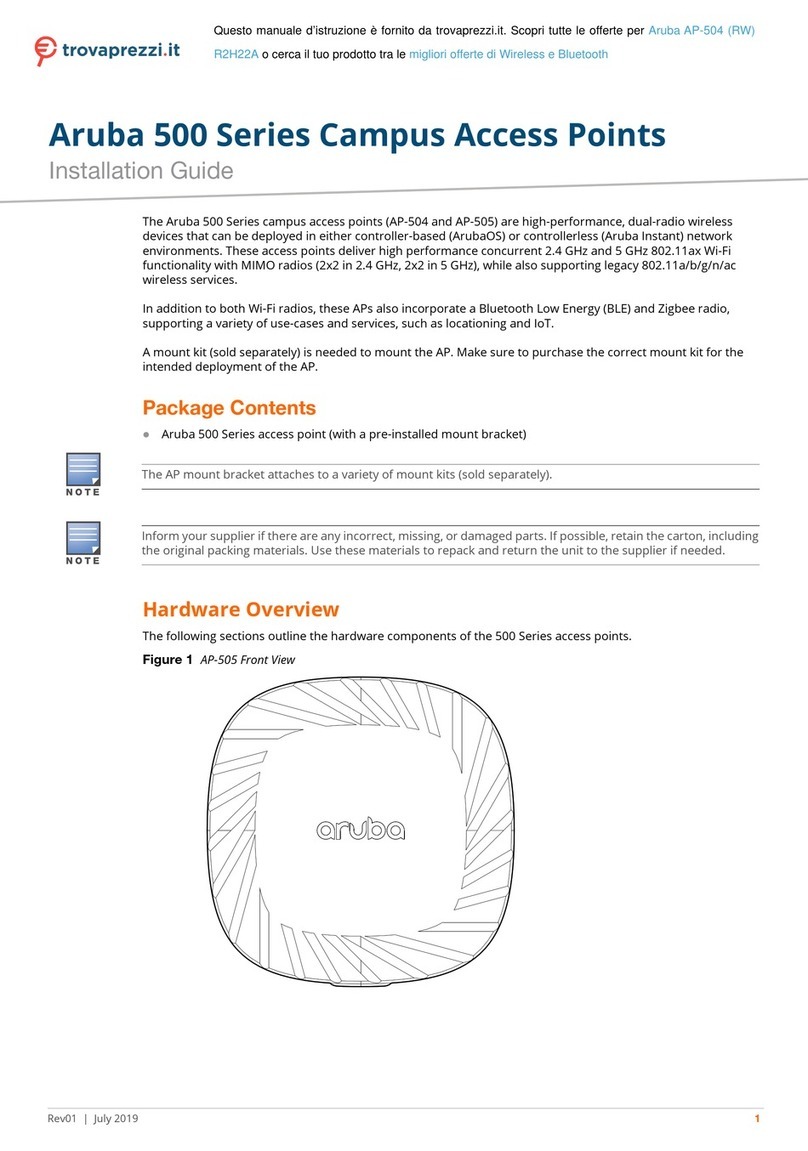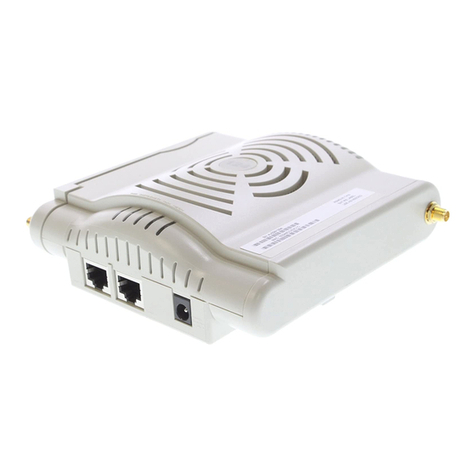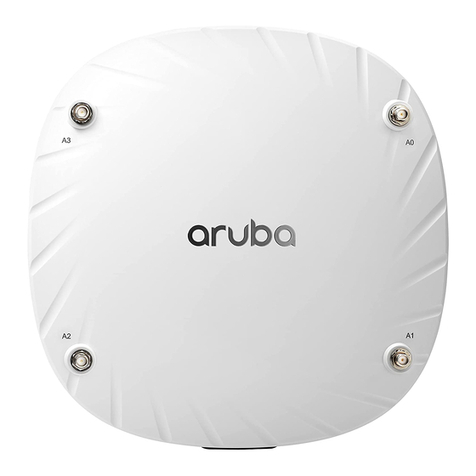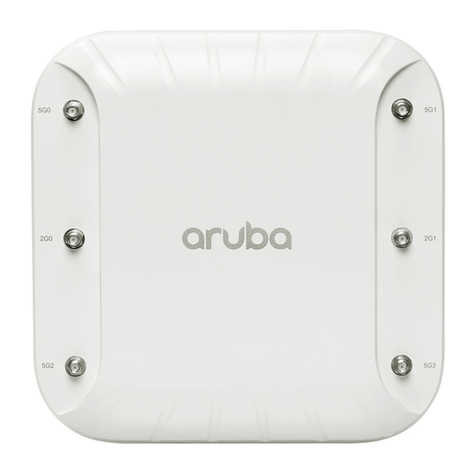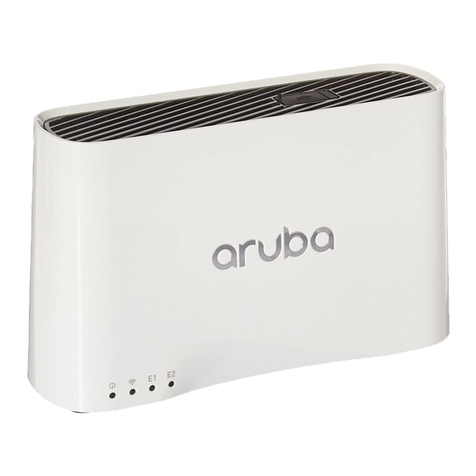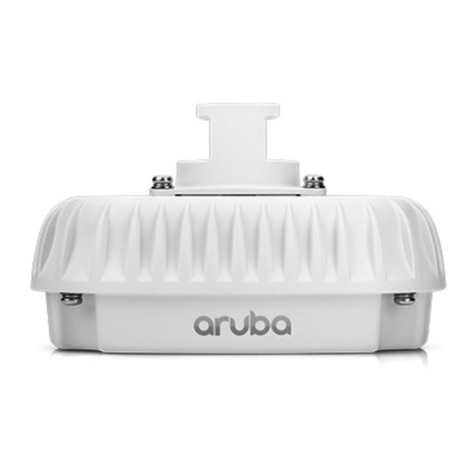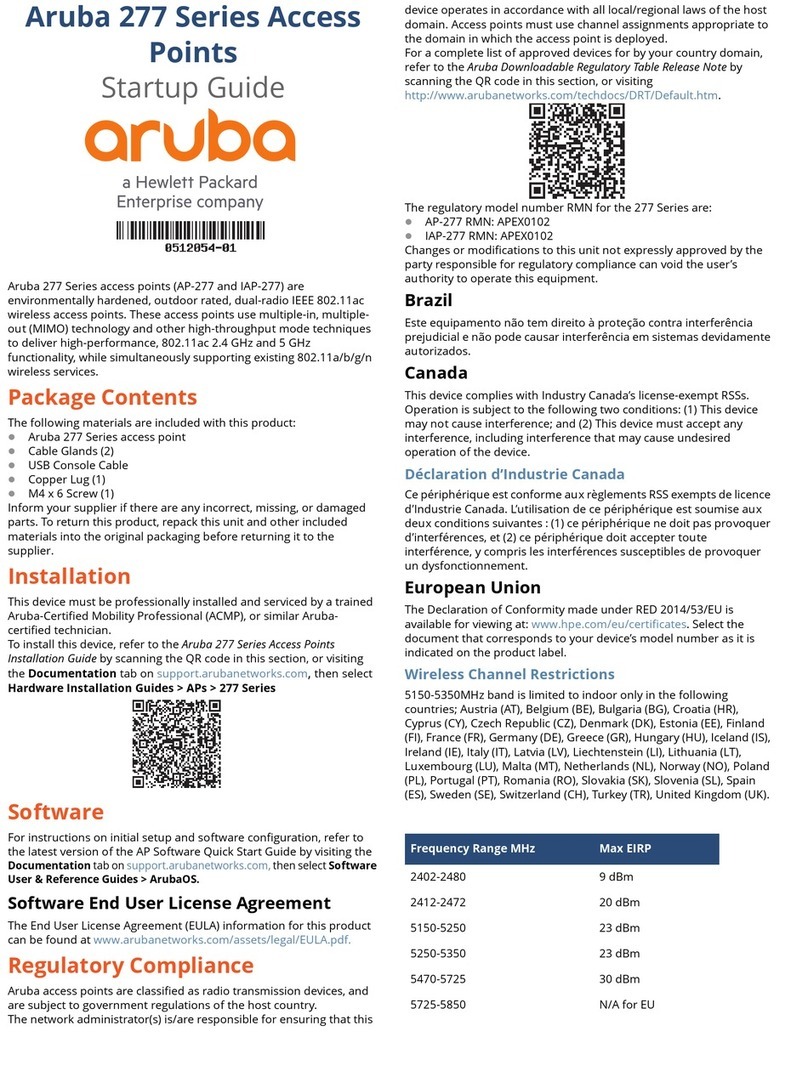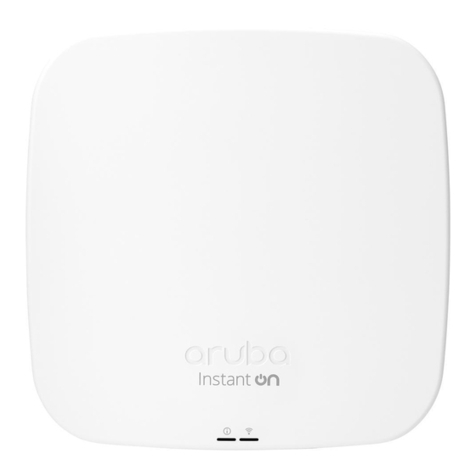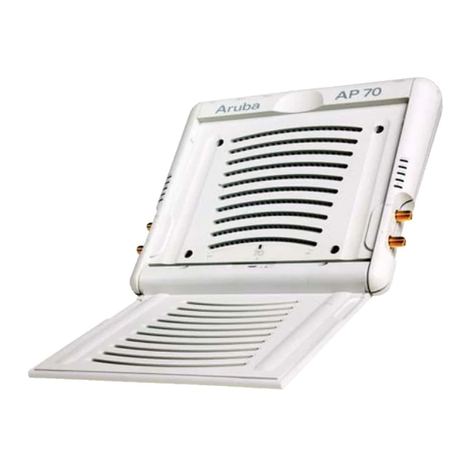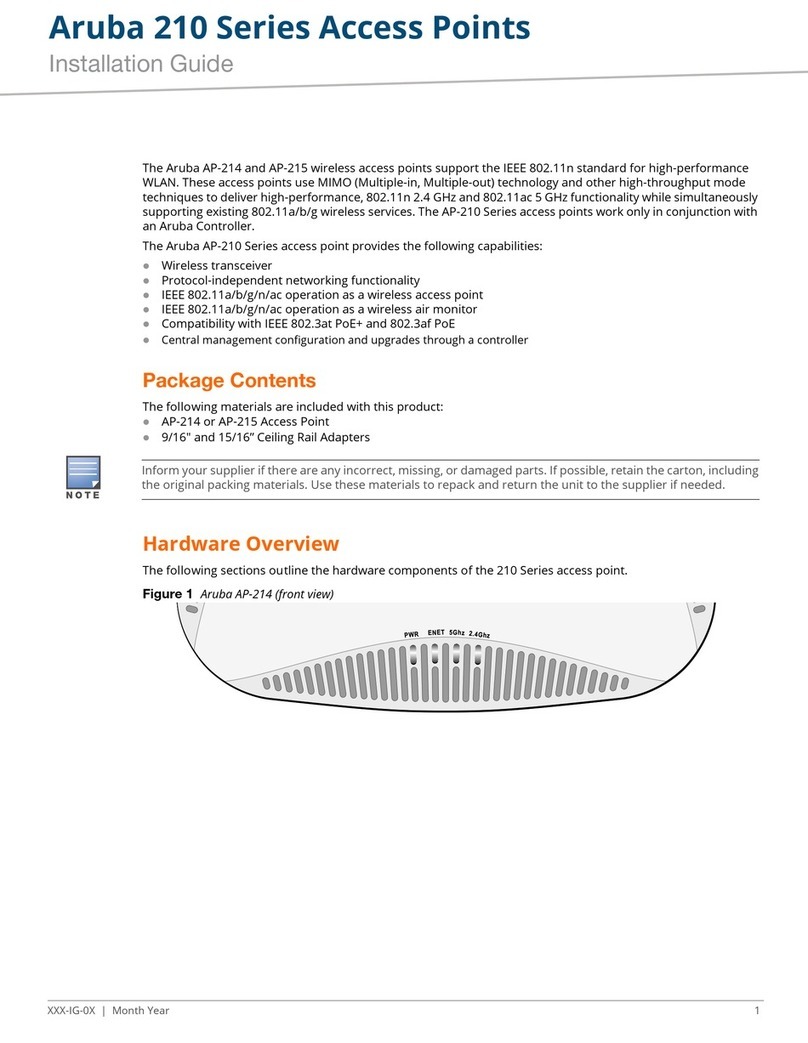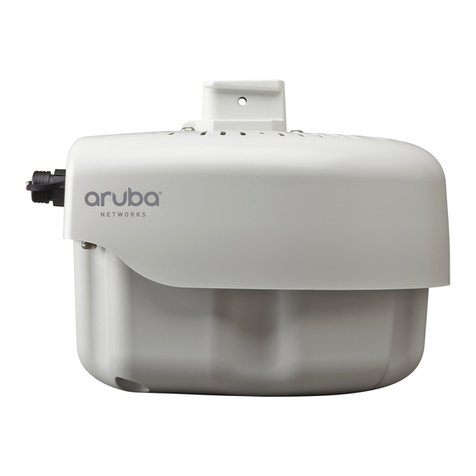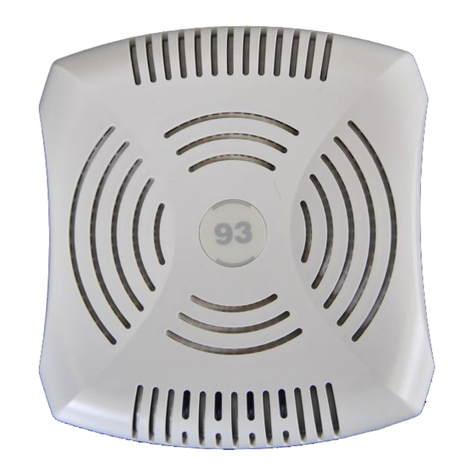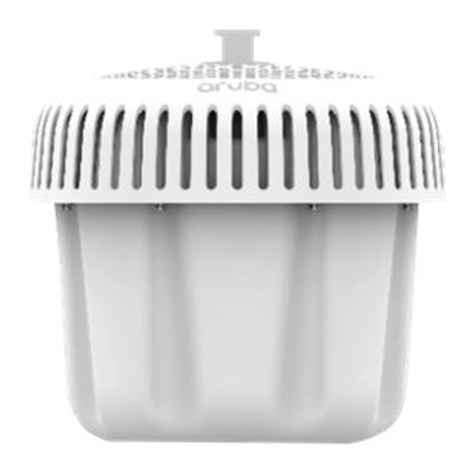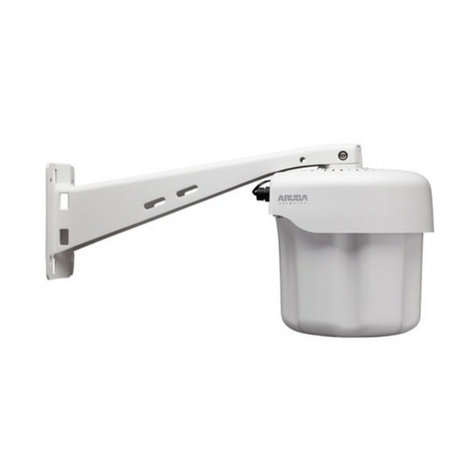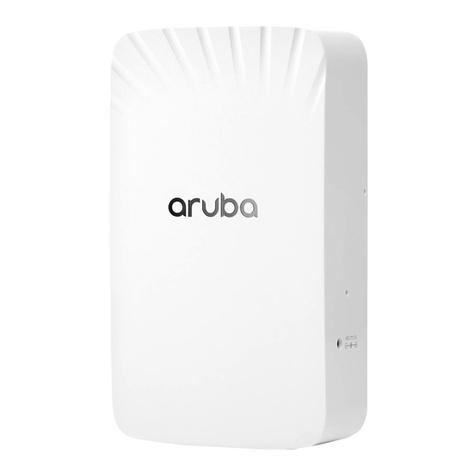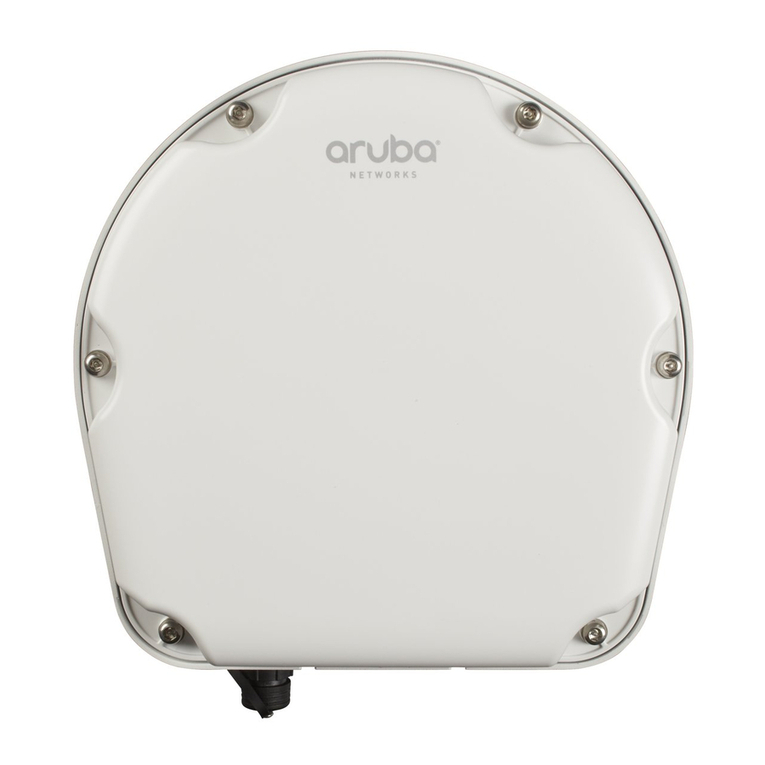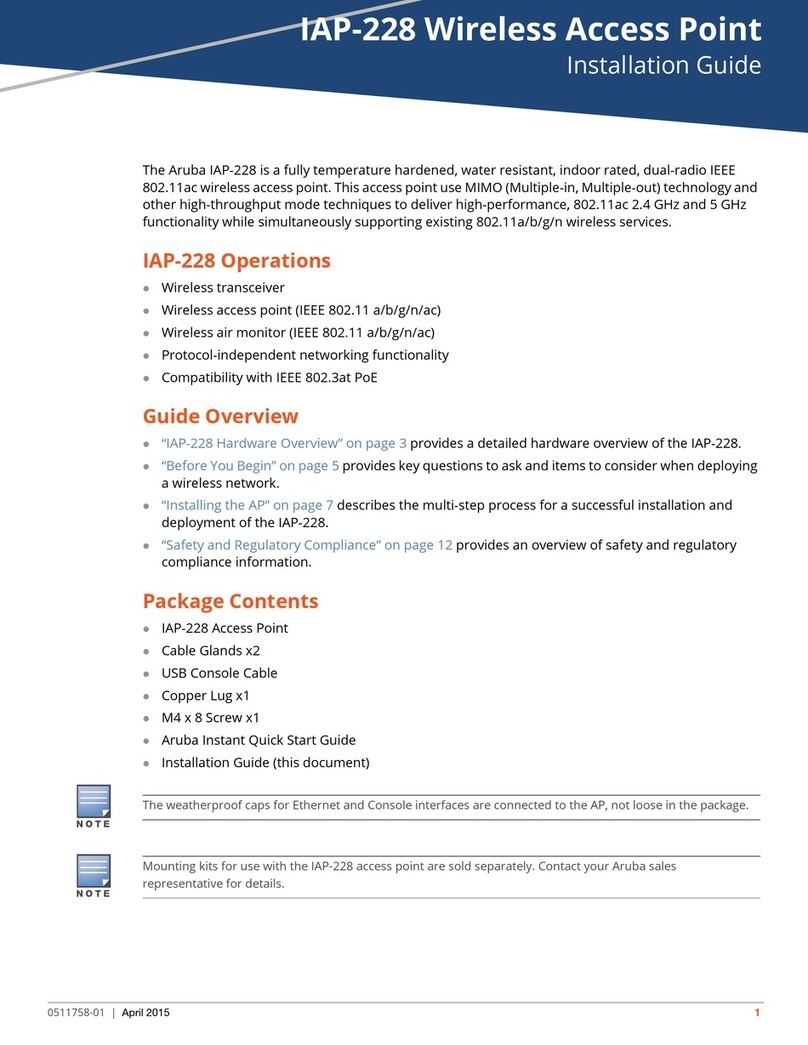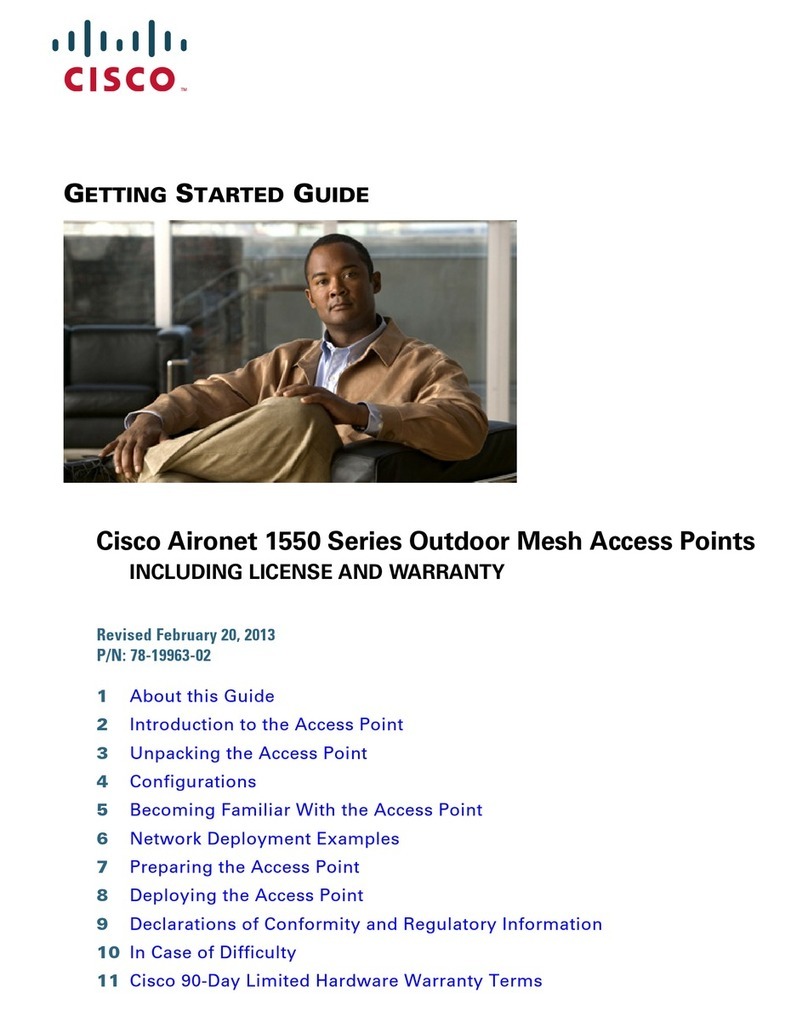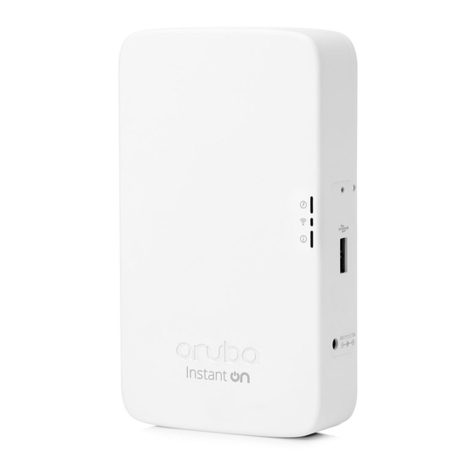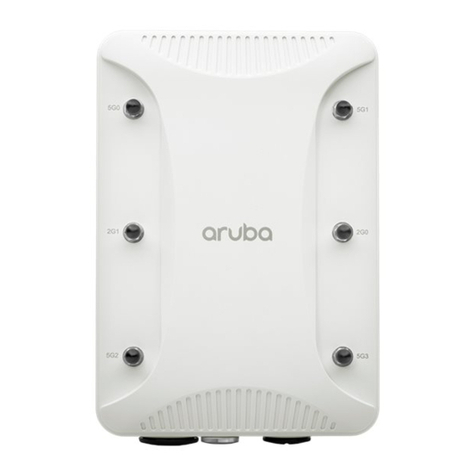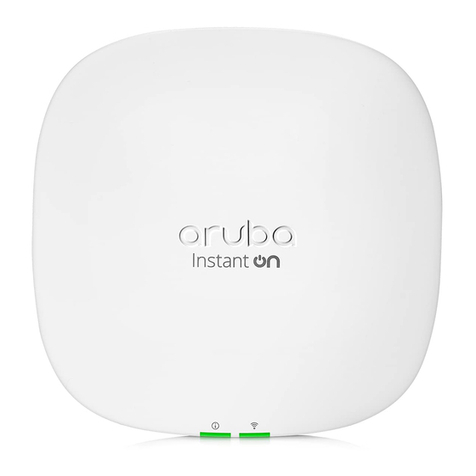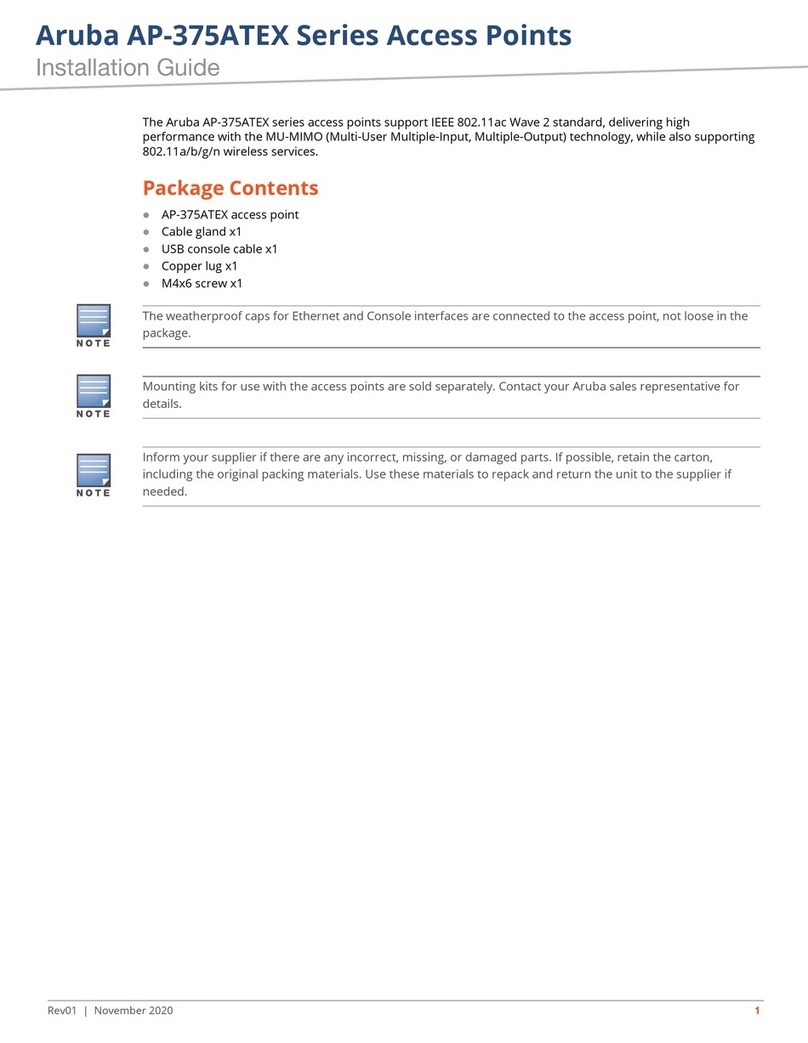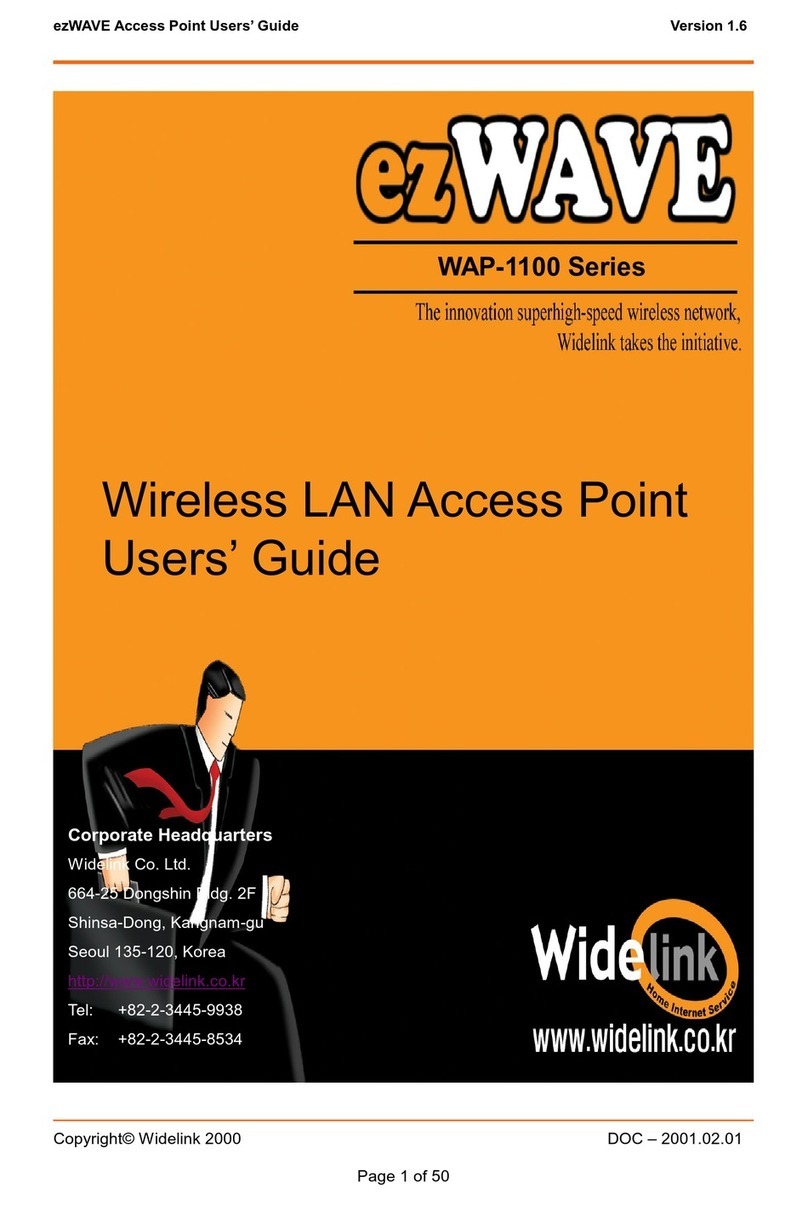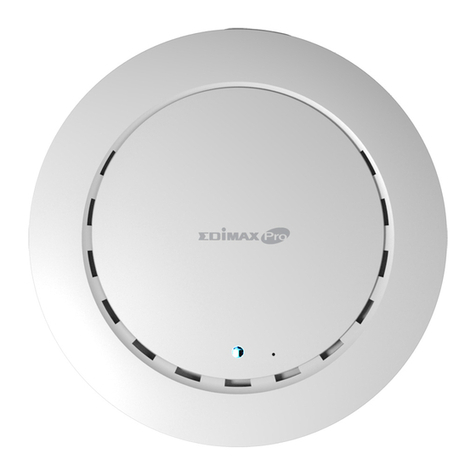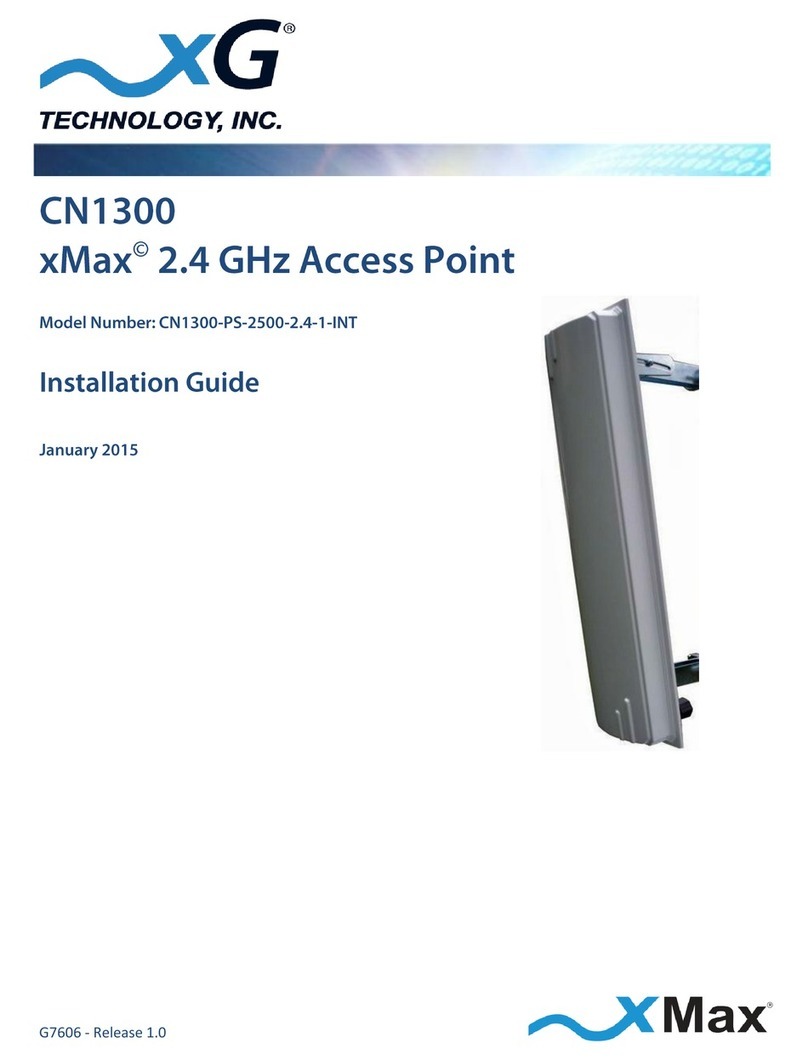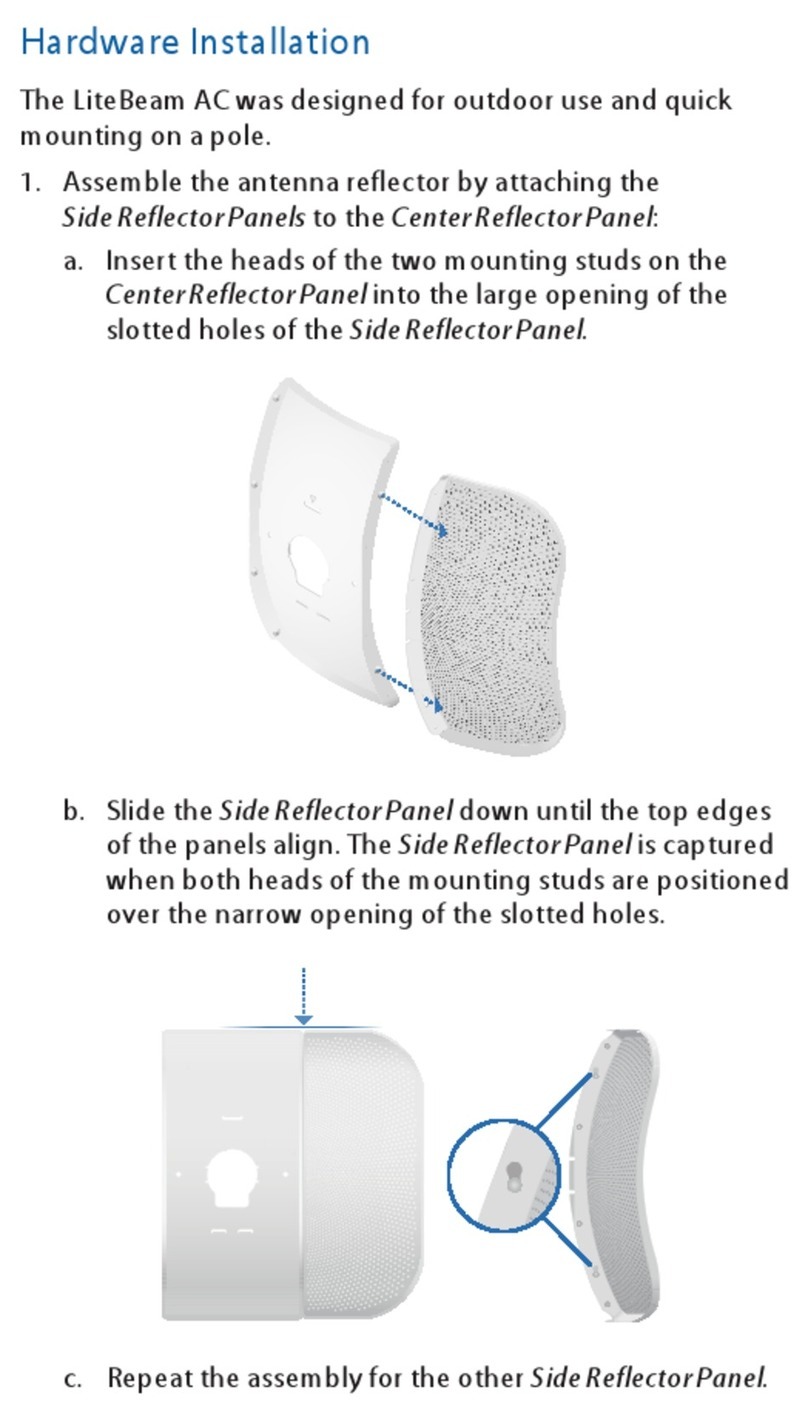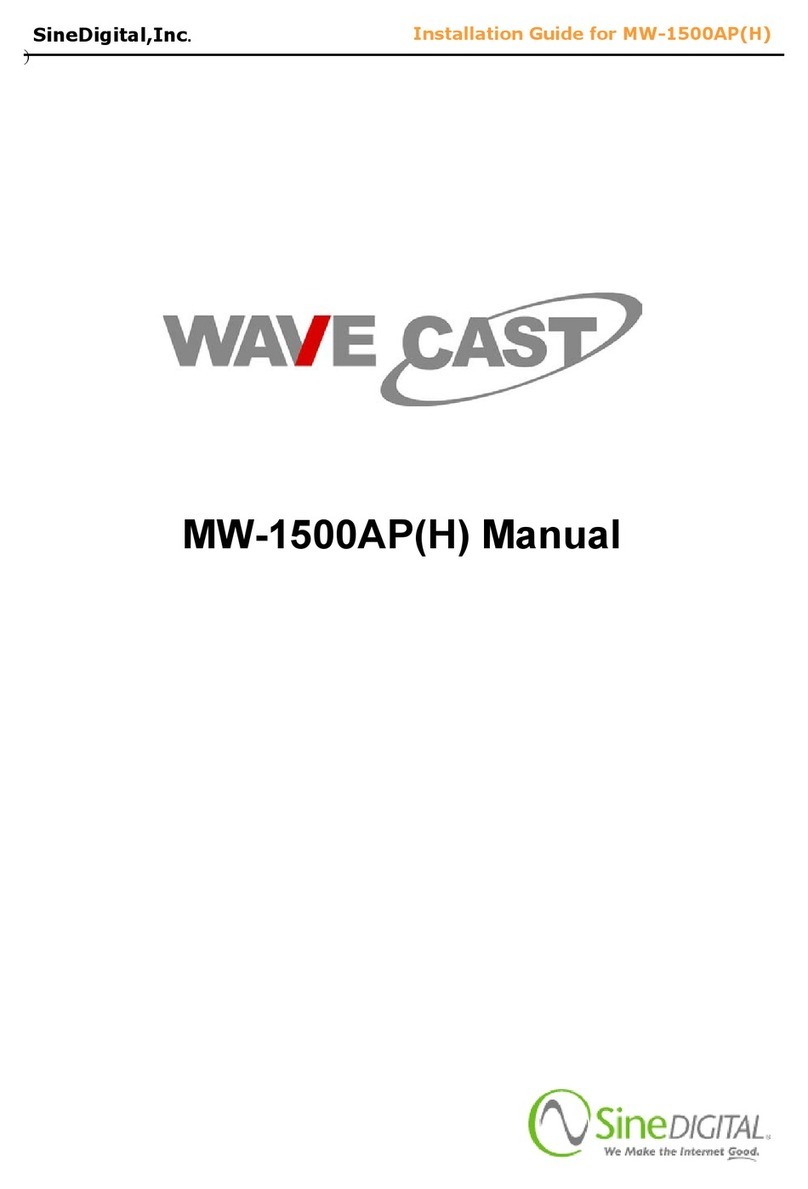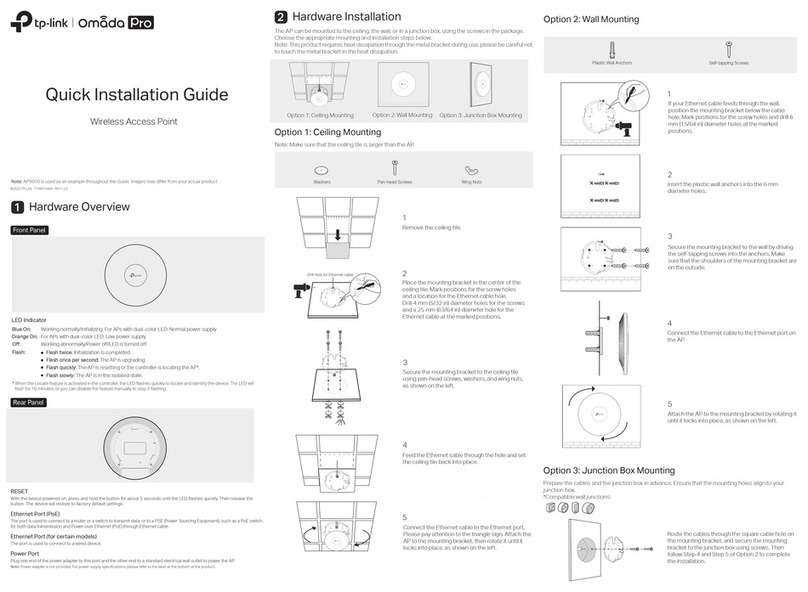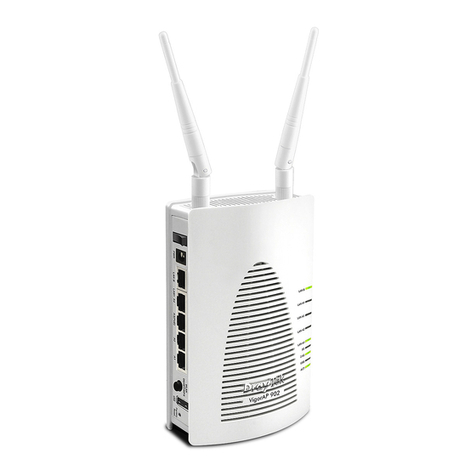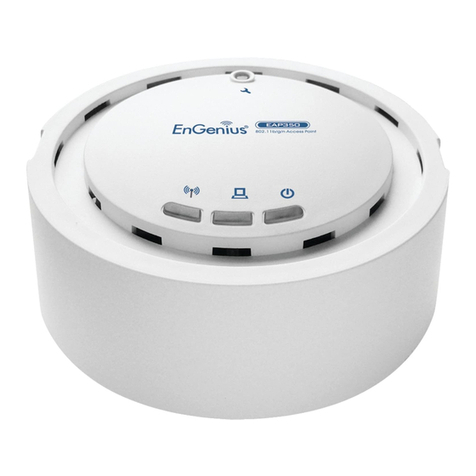
8IAP-270 Series Outdoor Access Point | Installation Guide
Identifying Specific Installation Locations
You can mount the IAP-270 Series access point on a wall or pole. Use the AP placement map generated by
Aruba’s RF Plan software application to determine the proper installation location(s). Each location should
be as close as possible to the center of the intended coverage area and should be free from obstructions or
obvious sources of interference. These RF absorbers/reflectors/interference sources will impact RF
propagation and should have been accounted for during the planning phase and adjusted for in RF plan.
Identifying Known RF Absorbers/Reflectors/Interference Sources
Identifying known RF absorbers, reflectors, and interference sources while in the field during the
installation phase is critical. Make sure that these sources are taken into consideration when you attach an
AP to its fixed location. Examples of sources that degrade RF performance include:
Cement and brick
Objects that contain water
Metal
Microwave ovens
Wireless phones and headsets
Installing the AP
EU Statement:
Lower power radio LAN product operating in 2.4 GHz and 5 GHz bands. Please refer to the Aruba Instant User
Guide for details on restrictions.
Produit réseau local radio basse puissance operant dans la bande fréquence 2.4 GHz et 5 GHz. Merci de vous
referrer au Aruba Instant User Guide pour les details des restrictions.
Low Power FunkLAN Produkt, das im 2.4 GHz und im 5 GHz Band arbeitet. Weitere Informationen bezlüglich
Einschränkungen finden Sie im Aruba Instant User Guide.
Apparati Radio LAN a bassa Potenza, operanti a 2.4 GHz e 5 GHz. Fare riferimento alla Aruba Instant User Guide
per avere informazioni detagliate sulle restrizioni.
Aruba Networks, Inc. in compliance with governmental requirements, has designed the IAP-270 Series such that
only authorized network administrators can change configuration settings. For more information about AP
configuration, refer to the Aruba Instant Quick Start Guide and Aruba Instant User Guide.
Access points are radio transmission devices and as such are subject to governmental regulation. Network
administrators responsible for the configuration and operation of access points must comply with local broadcast
regulations. Specifically, access points must use channel assignments appropriate to the location in which the
access point will be used.
Service to all Aruba products should be performed by trained service personnel only.
